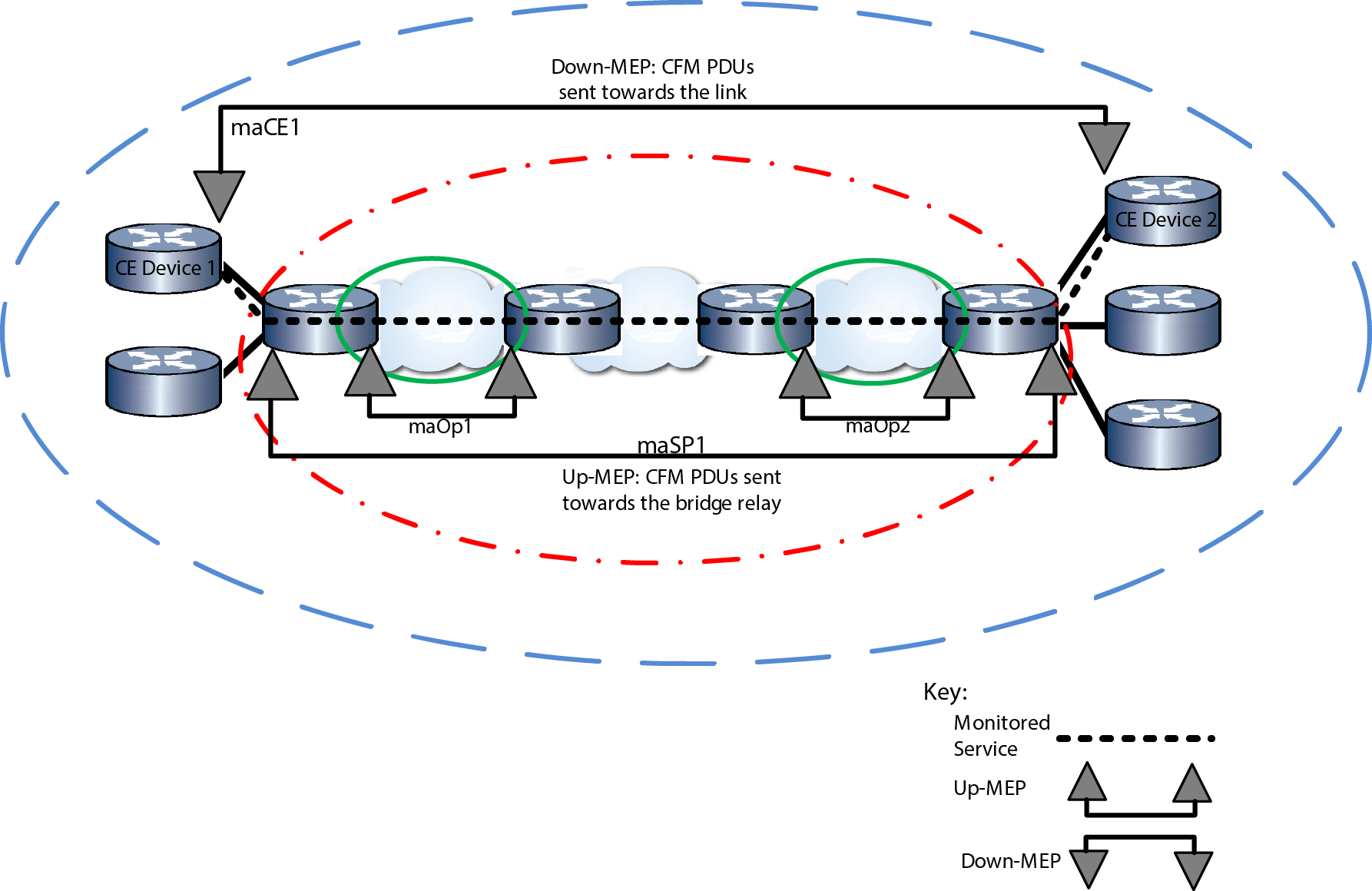The Maintenance End-Point (MEP) serves as the logical boundary between devices that belong to different maintenance domains. A MEP resides at the edge of an MD. A MEP is associated with a single MA that monitors a primary VLAN service and any services associated with the primary service configured in an enabled VLAN table. The MEP must belong to the primary service associated with the MA or a service associated with the primary service. A MEP has a direction of either Up or Down. A Down-MEP sends CFM PDUs towards and receives CFM PDUs from the link. In our overview example, The MEPs associated with the customer equipment monitored service configure their MEPs as Down-MEPs. An Up-MEP sends PDUs towards the bridge relay and receives PDUs from the bridge relay. Up-MEPs communicate through the bridge relay with all other ports attached to the protective service within that bridge. All non-customer equipment MEPs are configured as Up-MEPs for a customer equipment monitored service.
Maintenance End-Point Overview displays MEP location and direction for our overview example. Customer equipment devices CE Device 1 and CE Device 2 belong to MA maCE1 and each are configured with a Down-MEP facing the service provider MD configured as MA maSP1. The customer equipment administrator wants to monitor the service between CE Device 1 and CE Device 2. The customer equipment Down-MEPs send CFM PDUs towards the link and therefore towards the remote Down-MEP belonging to maCE1 at the other end of the service. All Up-MEPs, belonging to other domains configured between the initiating and remote customer equipment down-MEPs, will transparently forward the CFM PDUs to the remote customer equipment MEP.
If a MEP fails to receive CFM PDUs in a timely fashion, CFM reports the failure.

Within MEP configuration mode you must specify the port that the MEP is on and its direction. The MEP direction defaults to down.

 Print
this page
Print
this page Email this topic
Email this topic Feedback
Feedback